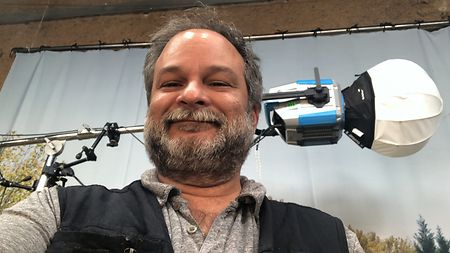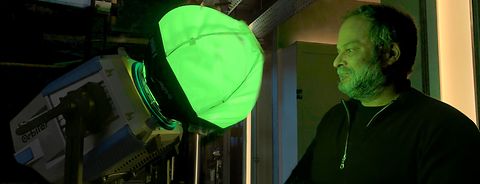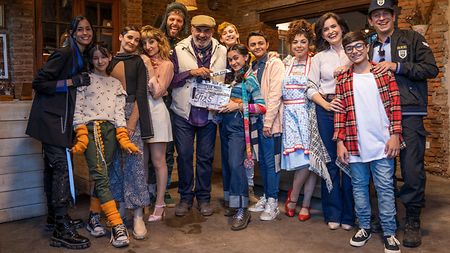How was your experience with the Orbiter in terms of color?
Visually, the series uses VFX and luminous elements embedded in post-production, following a specific color pattern chosen by the client, which becomes distinctive for the series. The Orbiter played a crucial role because it allowed me to create a complex effect where the light had to rapidly fluctuate between specific colors and varying intensities at a pace that would serve VFX to integrate a very particular luminous element, which would change shape and move continuously within the sets and among the characters. I had to coordinate with VFX the rhythm, color, fluctuation, incidence area, speed, and direction of light movement so that the digitally inserted effect would organically integrate into the scene.
For what type of productions would you recommend using the ARRI Orbiter, and why?
When I first heard about the Orbiter, I thought it was a wonderful idea, but I believed it would be justified mainly in projects with a highly stylized, dynamic, theatrical, and ultimately sophisticated aesthetic. I still think that it has tremendous potential when utilized in complex or extreme setups. However, after using it, I realized that I was wrong about its specificity of application. I find it to be a highly adaptable tool that makes sense in various scenarios. You can always benefit from it, even if you don't use all its functions. The advantages of a lighting tool are not solely defined by the light it produces. Many times, it's about how much easier it makes your work and how much time it saves. In those areas of productivity, effort, budget, and limitations, it's sometimes where the real value of a product lies. And whenever I can achieve that drop of uniqueness, having a resource like this becomes worthwhile.
In scenes with a more “everyday” aesthetic, the Orbiter has helped me achieve finer adjustments more quickly and allowed me to discover opportunities for unique effects that arose spontaneously. As a compositional element, the Orbiter is of great assistance, because it allows me to control the color within a wide spectrum on a hard and intense light source. It is also very practical that the light's color adapts to the changing color temperature of the environment through a sensor.
The Orbiter allows you to create natural light environments by changing the color from scene to scene







